As the UK gets set to celebrate the Queen’s Platinum Jubilee in June, one village in South Yorkshire holds a historic affinity with the British royal family.
Developed as a resplendent display of power by the Earls Fitzwilliam from Wentworth Woodhouse, for centuries Elsecar has been an attraction for visiting aristocracy and royalty.
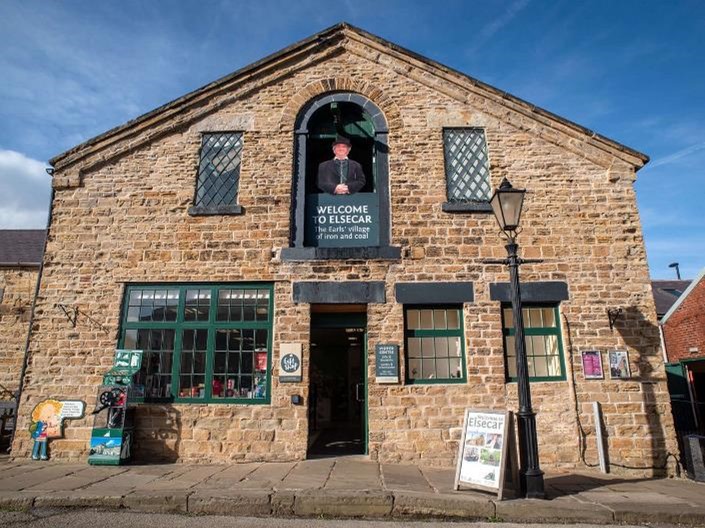
Elsecar was perhaps the first of its kind, a model village with cottages, a school and church built for workers at the Earl’s colliery and ironworks. Its successors Saltaire, Bourneville and Port Light were heavily influenced by the Elsecar model.
The village epitomised the Fitzwilliam family’s desire to boast of their might, influence and vision. It was built at great expense, pulling out all the stops whenever a royal visit was planned; of which there were many during the 19th and 20th centuries.
1828
One of the earliest known visits of the Royal Family to Elsecar is when King George III and Queen Charlotte’s third son, the Duke of Clarence, visited in 1828 two years before he would become King William IV.
William was the first royal to ever go underground when he descended Elsecar Old Colliery. The Fitzwilliams had two grand stone colliery entrances built for noble guests to walk through, evidence of which were found through the Elsecar Heritage Action Zone scheme, a partnership between Historic England and Barnsley Council.
1851
The Earls intended for Elsecar to be in the eyes and minds of influential visitors. But in 1851, the 5th Earl, Charles Wentworth-Fitzwilliam, showcased their renowned commodities to the world at the Great Exhibition of products and industry. Miners from Elsecar New Colliery managed to extract an eight-foot column of coal from the pit which was transported to Crystal Palace.
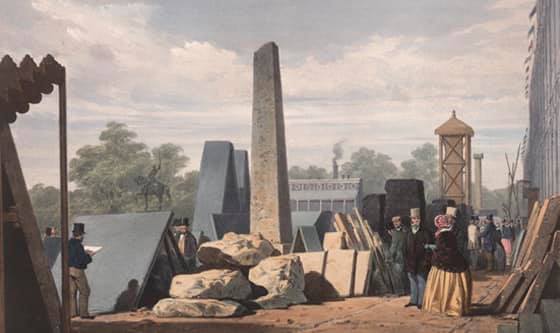
The Fitzwilliams were one of 100,000 British manufacturing exhibitors at the event which attracted over six million visitors. Queen Victoria was reported to have been taken outside to marvel at the imposing column of coal.
1886
Inspired by the Great Exhibition, the 6th Earl, William Wentworth-Fitzwilliam held an exhibition of fine art and industry at the Market Hall (what is now Milton Hall) in 1886.
By royal appointment, he invited Queen Victoria’s cousin, Princess Mary Adelaide, Duchess of Teck, to open the event. She was joined by the full band of the 1st West Yorkshire Yeoman Cavalry, of which the 6th Earl was in command for forty years. The Duchess was joined by her husband and daughter, Princess Victoria Mary ‘May’ who would later go on to marry King George V.
The event would see the Earl’s collection of Canaletto paintings brought down from Wentworth Woodhouse, along with a display of works and inventions by over 600 entrants. There was a band contest, cricket matches, pony showcase, and reduced fare rail trips.
Throughout the village, residents had gone to town on designing and creating special gardens for Her Royal Highness’ visit. But a big dust storm that day would dampen their efforts.
1891
What is now the children’s nursery within Elsecar Heritage Centre was once the Earl’s private railway station which opened in 1870. It was primarily used to transport the Earl’s visiting parties to St Leger race meetings in Doncaster, known as the EFW Specials.
The station also had a special Royal Standard issued by the trainline which was to be flown when royalty was visiting. One such occasion was in 1891 when Edward, Prince of Wales took the special royal coach to St Leger races.
Thousands turned out to see Prince Edward, the eldest son and heir apparent of Queen Victoria and Prince Albert.
Edward was a keen horseracing enthusiast whose many horses went on to win stakes at St Leger, Newmarket and Derby as well as the Grand National.
1912
Perhaps the most famous, well-documented royal visit to Elsecar is when King George V and Queen Mary came in 1912. It was notable for the fact that the King went underground despite a terrible mining disaster in the nearby area the day before.
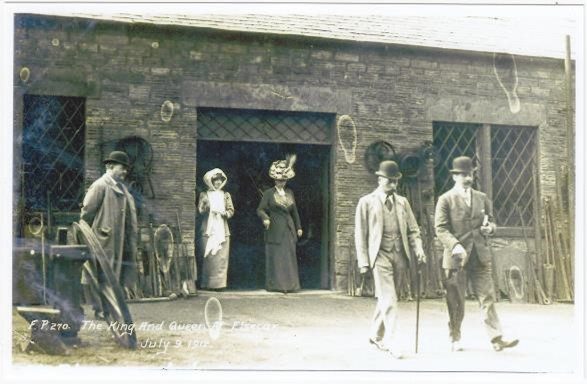
George had been coronated the previous year following the death of his father, Edward VII. At the time, the country was in the midst of social unease and it was suggested the King take a tour of industrial areas to observe people in their working conditions, understand how they made a living, and better connect with the working class.
During his visit to South Yorkshire, the monarch and Queen consort were invited to stay at Wentworth Woodhouse as a guest of Billy, 7th Earl Fitzwilliam who was known for being the most grandiose of all Earl Fitzwilliams.
However, the King was of the opposite disposition and actively discouraged any majestic decorations during his visit so not as to place any further expense on the struggling communities. The royal couple visited Conisbrough Castle, Clifton Park Museum, Silverwood Colliery, Hickleton Hall and Barnsley’s Rylands Glass Works.
But many will have seen the iconic photos of the bowler hat-clad king arriving at Elsecar to become the first reigning monarch to descend a coal mine. This was all the more poignant as 91 men had been killed only the day before when two explosions happened at Cadeby pit.
1944
During the Second World War, King George VI and the Queen Mother visited Elsecar Main Colliery to have lunch with 70 pit workers. A roast beef dinner was prepared by a woman from the village, with the Queen Mother reportedly commenting that they had not had a better meal for a long time.
The King and Queen were figures of the fight against fascism and had refused to leave Britain during the war. Instead, they toured the country to make morale-boosting visits as a symbol of national resistance.
Their visit to Elsecar was part of a six-hour trip to West and South Yorkshire coalfields, where they also visited Wentworth to see the open cast mining workings and giant excavators.
1994
Fifty years after her mother and father, Queen Elizabeth II made the journey to Elsecar in the mid-90s to officially open Elsecar Heritage Centre.
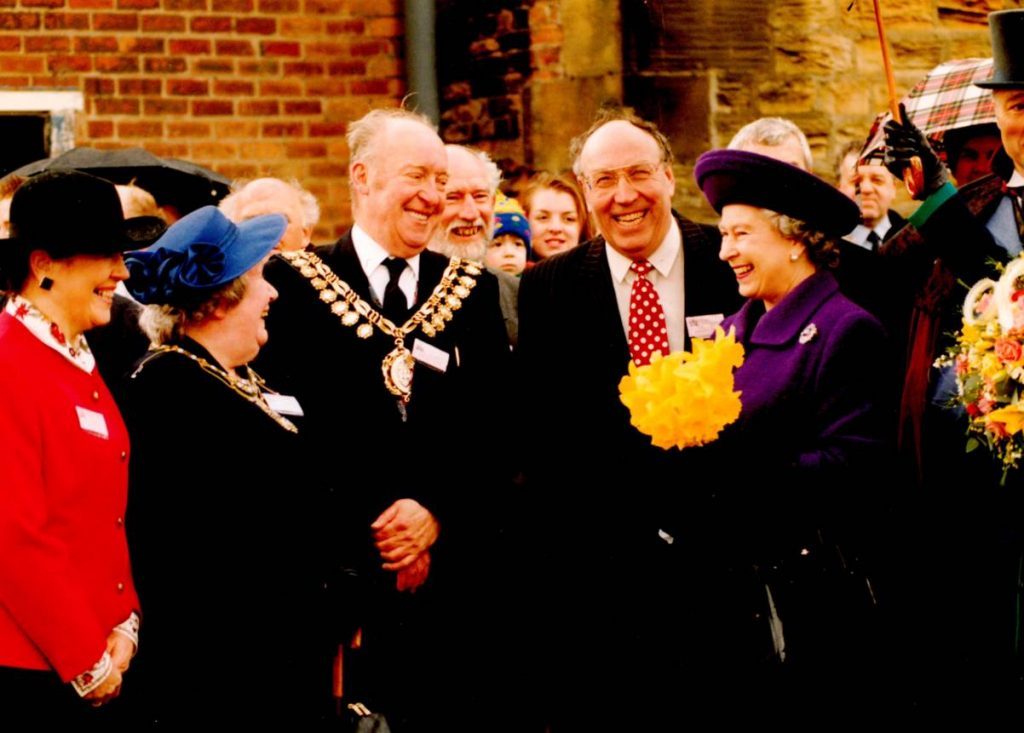
After the final colliery, Elsecar Main, had closed in 1984, ending 230 years of mining in the village, the ironworks and workshops were sold off before being taken over by Barnsley Council.
Since its opening, Elsecar Heritage Centre has continued to flourish with the New Yard now home to various independent businesses and shops.
2015
The most recent royal visit to Elsecar was in 2015 when Prince Edward became the seventh generation to visit when he came to officially mark the conservation of the 1795 Newcomen Beam Engine.
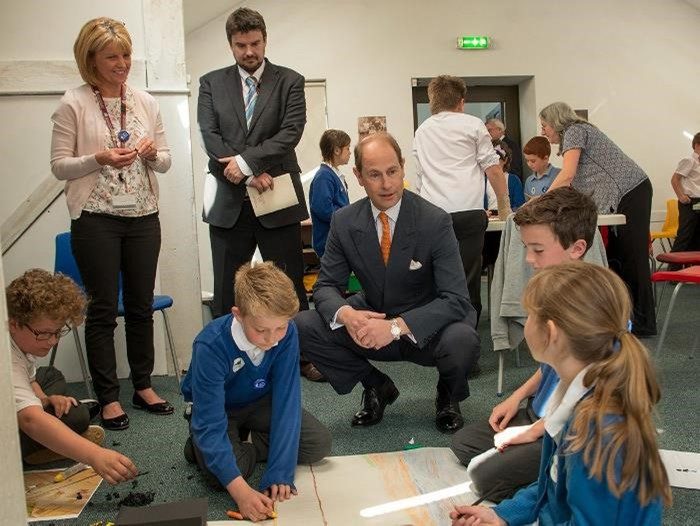
His visit also gave Prince Edward an insight into well the area’s proud iron making and coalmining past, speaking with local businesses residents and school children.
The Newcome Engine is a brilliant piece of machinery that has been described as the most important piece of industrial heritage in the world. It is the oldest steam engine still in its original location and was restored to its former glory thanks to a £465,500 Heritage Lottery Fund grant.






